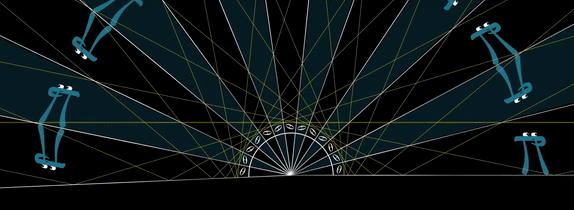Unit 10 covers sequences and series. These are BC only topics (CED – 2019 p. 177 – 197). These topics account for about 17 – 18% of questions on the BC exam.
Topic 10.1: Defining Convergent and Divergent Series.
Topic 10. 2: Working with Geometric Series. Including the formula for the sum of a convergent geometric series.
Topics 10.3 – 10.9 Convergence Tests
The tests listed below are assessed on the BC Calculus exam. Other methods are not tested. However, teachers may include additional methods.
Topic 10.3: The nth Term Test for Divergence.
Topic 10.4: Integral Test for Convergence. See Good Question 14
Topic 10.5: Harmonic Series and p-Series. Harmonic series and alternating harmonic series, p-series.
Topic 10.6: Comparison Tests for Convergence. Comparison test and the Limit Comparison Test
Topic 10.7: Alternating Series Test for Convergence.
Topic 10.8: Ratio Test for Convergence.
Topic 10.9: Determining Absolute and Conditional Convergence. Absolute convergence implies conditional convergence.
Topics 10.10 – 10.12 Taylor Series and Error Bounds
Topic 10.10: Alternating Series Error Bound.
Topic 10.11: Finding Taylor Polynomial Approximations of a Function.
Topic 10.12: Lagrange Error Bound.
Topics 10.13 – 10.15 Power Series
Topic 10.13: Radius and Interval of Convergence of a Power Series. The Ratio Test is used almost exclusively to find the radius of convergence. Term-by-term differentiation and integration of a power series gives a series with the same center and radius of convergence. The interval may be different at the endpoints.
Topic 10.14: Finding the Taylor and Maclaurin Series of a Function. Students should memorize the Maclaurin series for , sin(x), cos(x), and ex.
Topic 10.15: Representing Functions as Power Series. Finding the power series of a function by differentiation, integration, algebraic processes, substitution, or properties of geometric series.
Timing
The suggested time for Unit 9 is about 17 – 18 BC classes of 40 – 50-minutes, this includes time for testing etc.
Previous posts on these topics:
Before sequences
Amortization Using finite series to find your mortgage payment. (Suitable for pre-calculus as well as calculus)
A Lesson on Sequences. An investigation, which could be used as early as Algebra 1, showing how irrational numbers are the limit of a sequence of approximations. Also, an introduction to the Completeness Axiom.
Convergence Tests
Which Convergence Test Should I Use? Part 1: Pretty much anyone you want!
Which Convergence Test Should I Use? Part 2: Specific hints and a discussion of the usefulness of absolute convergence
Good Question 14 on the Integral Test
Sequences and Series
Graphing Taylor Polynomials. Graphing calculator hints
New Series from Old 1: Substitution (Be sure to look at example 3)
New Series from Old 2: Differentiation
New Series from Old 3: Series for rational functions using long division and geometric series
Geometric Series – Far Out: An instructive “mistake.”
A Curiosity: An unusual Maclaurin Series
Synthetic Summer Fun Synthetic division and calculus including finding the (finite)Taylor series of a polynomial.
Error Bounds
Error Bounds: Error bounds in general and the alternating Series error bound, and the Lagrange error bound
The Lagrange Highway: The Lagrange error bound.
What’s the “Best” Error Bound?
Review Notes



